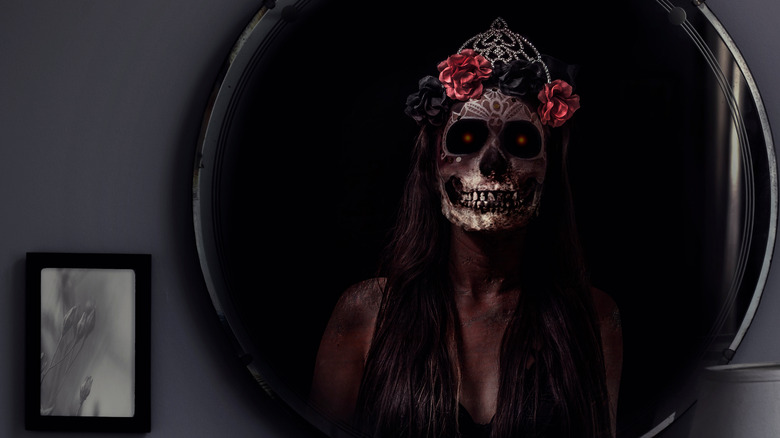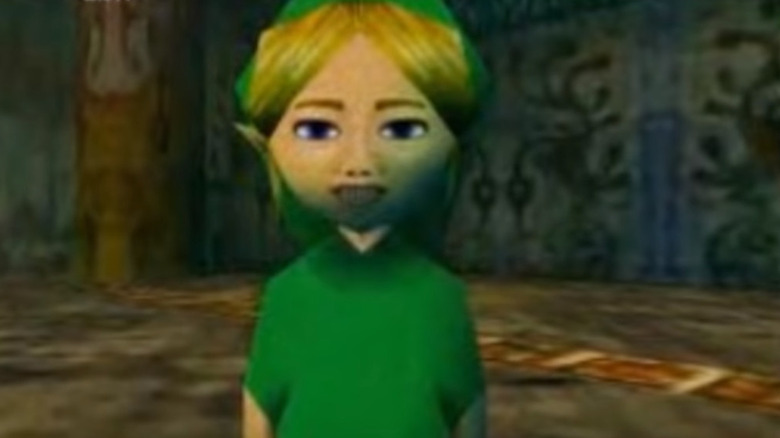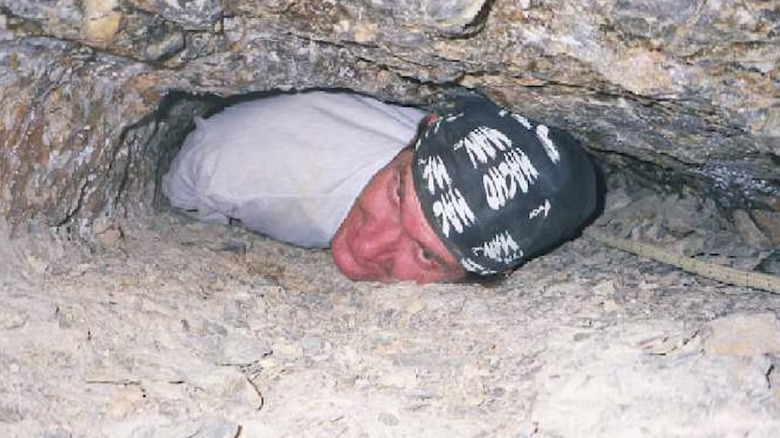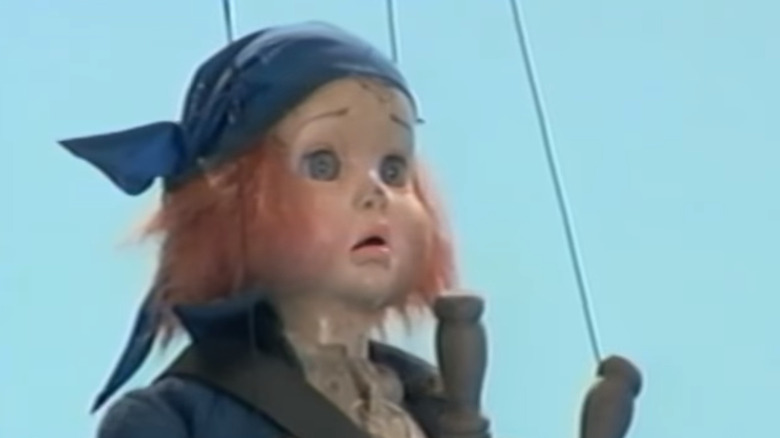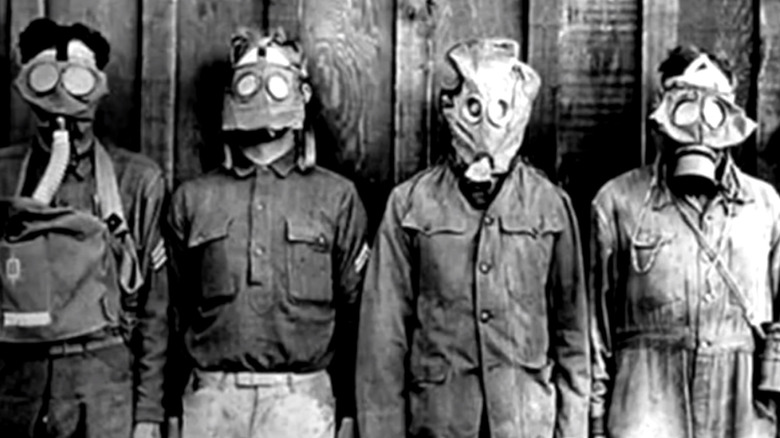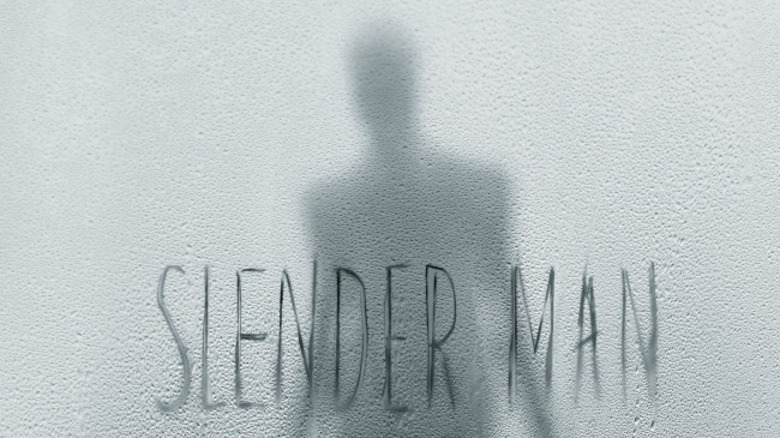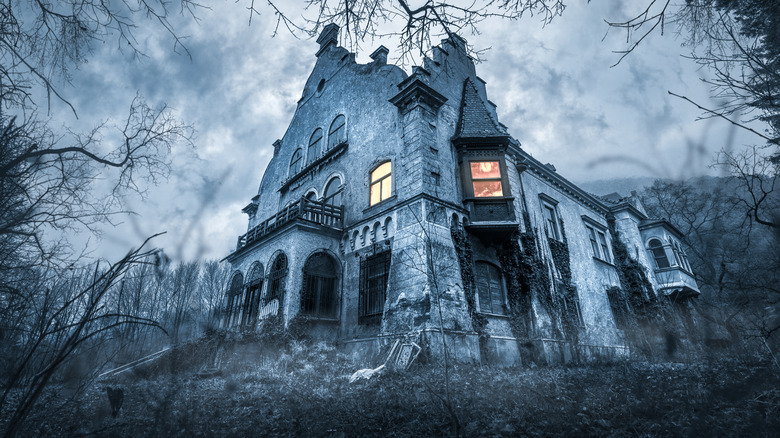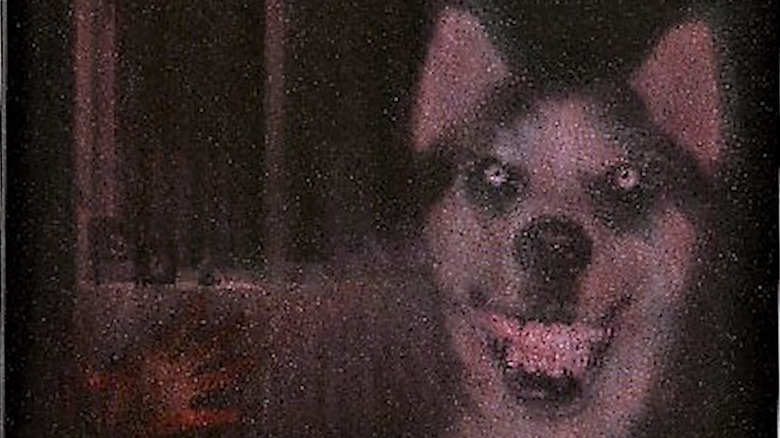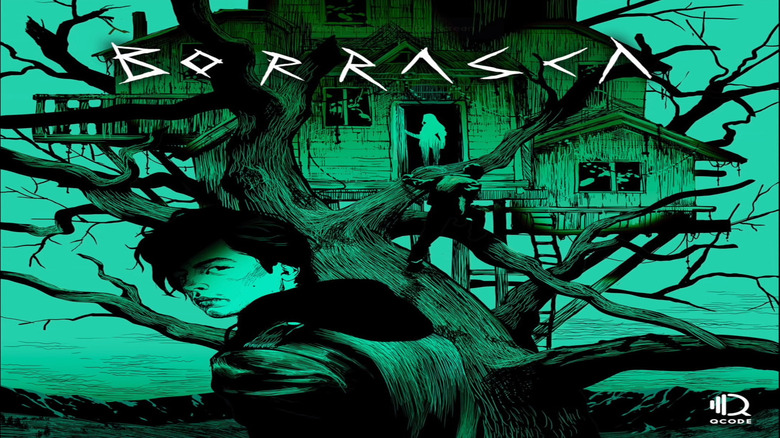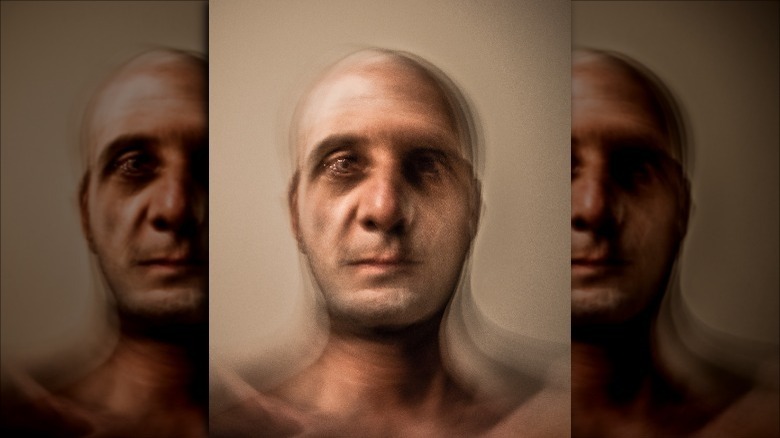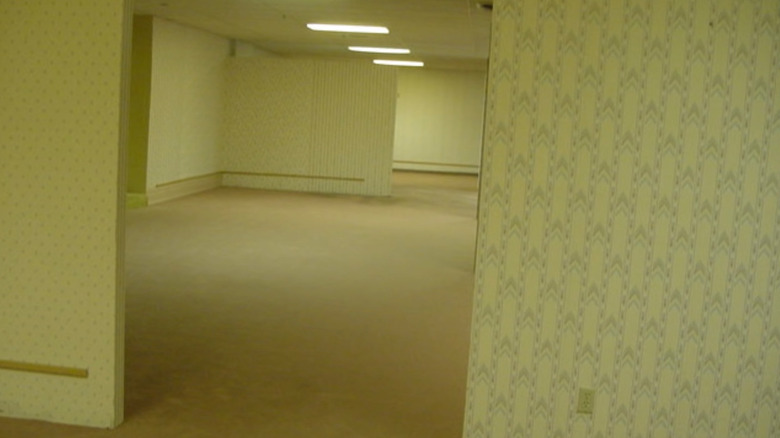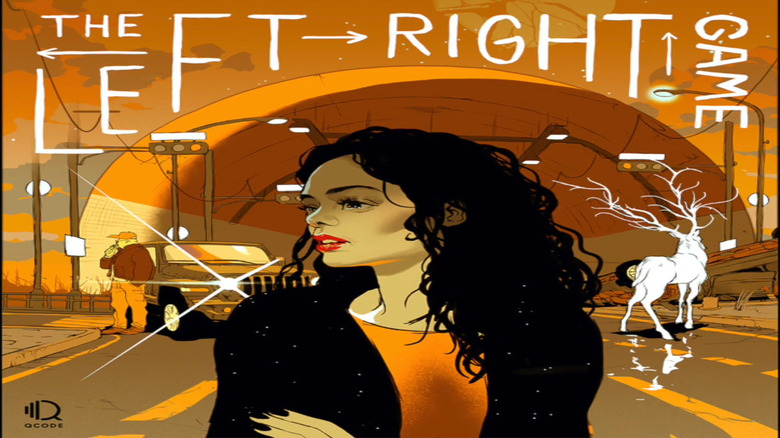The Scariest Creepypasta From Around The Internet
Creepypastas (derived from the term copypasta, a corruption of "copy and paste") are the campfire stories of the modern age. These typically short, first-person horror stories show up in online communities like Reddit's r/nosleep and often go viral, spreading fear and terror wherever they go. In fact, some of the best creepypastas have crossed over into the mainstream, becoming memes and even inspiring films and podcasts designed for a wide audience.
What makes a great creepypasta? It's a simple recipe: It should be told in the first-person, as if the author is simply relating something that happened or is happening to them. It should be concise and brief (though some creepypastas evolve into epics). And, of course, it should be scary as heck.
What really makes a creepypasta work is the readers' willingness to suspend disbelief and accept it as a factual account from a very freaked-out person. The best examples always seem a little rough and unpolished, allowing the reader to easily imagine someone with shaking hands tapping out their story as they jump at every noise, their sense of security and rationality shattered by what they've experienced. The stories on this list have all met and exceeded these requirements, but be warned — these are the scariest creepypasta from around the internet.
BEN Drowned: A classic haunted video game
One of the earliest creepypastas to really find an audience, "BEN Drowned" is a classic with the power to terrify. As reported by Kotaku, the story first appeared on 4chan's paranormal board, and it was written by a college student named Alex Hall under the user name Judasable. The story is simple: Kid finds a weird Nintendo 64 game cartridge labeled "Majora" (there's a real game called "The Legend of Zelda: Majora's Mask"), kid finds a bunch of saved files on it from a previous owner named Ben, kid plays the game and meets a terrible fate.
Complementing the story with manipulated in-game videos, Judasable describes being haunted by the spirit of Ben in the form of "The Elegy of Emptiness," an empty shell of game character Link. While some familiarity with the specific game and the larger Zelda universe is helpful, anyone who has ever played a video game alone at night will find "BEN Drowned" terrifying. What Hall really tapped into was the sense of futility that many horror stories inspire — that sense that no matter what you do, you're doomed.
As noted by Fanbyte, the creepypasta grew beyond the format, inspiring an alternate reality game (ARG) in the form of a forum for a cult called the Moon Children, which expanded the story and added an extra layer of verisimilitude.
Ted's Caving Page: Full immersion
Sometimes considered to be the first creepypasta ever, this story of claustrophobic horror was originally posted to a free Angelfire site in 2001. It's extremely Web 1.0, but the story and accompanying photos combine to deliver a surprisingly effective horror story. Like most creepypasta, it's presented as a real experience, in this case the exploration of a hidden cave system near the author's home. As Ted and his partner, B, delve deeper and deeper, they encounter strange and frightening things, eventually encountering something that should have remained undisturbed.
As Bloody Disgusting notes, part of what makes "Ted the Caver" so powerful is how well its presented. Everything about it feels 100% authentic, from the writing to the photographs. People argued for years whether this was a true story or not because it really does read like an intrepid amateur caver documenting his strange experience. And the ending's ominous note is a gut-punch because the story does a great job of making you care what happens to this brave explorer.
The story is so foundational that it was adapted into a low-budget film in 2013, "Living Dark: The Story of Ted the Caver," which you can watch on Amazon Prime. The trailer does a pretty good job of capturing the tone of the original creepypasta.
Candle Cove and the Mandela Effect
"Candle Cove" is a creepypasta fueled on faded childhood memories and something called the Mandela Effect, which Healthline explains as "when a large group of people believe an event occurred when it did not."
Authored in 2009 by Kris Straub, "Candle Cove" begins as an innocuous forum discussion about a weird local children's show that aired in Ohio in the 1970s. As more and more people remembered seeing the show (which, to be clear, never existed), strange details begin to emerge. People recall sinister characters from the show and remember bizarre moments like entire episodes where the puppets just scream. Slowly, everyone involved begins to realize this was much more than just a kid's show.
As explained by Atlas Obscura, part of the power of "Candle Cove" is that many things made for kids in the past now seem terrifyingly inappropriate. Combine that with unreliable childhood memories that make it entirely possible that everyone is misremembering their own life to block out trauma (another popular horror trope), and you have a recipe for a creepypasta that made some people believe that had actually watched a horrifying, possibly supernatural TV show as children. The SyFy Network adapted the story as part of its horror anthology, "Channel Zero," in 2016.
The Russian Sleep Experiment: Secret histories
The best horror stories are inspired by something real — or at least something that sounds plausible. "The Russian Sleep Experiment" is one of those stories. The basics are simple: Back in the 1940s, the Soviet government developed a gas that would allow humans to go without sleep for up to a month at a time and tested it on five volunteer prisoners. But after just 15 days, the prisoners had been transformed into something not quite human.
It's effective not because it gets anything even remotely scientifically correct — as noted by Men's Health, nothing about this story is actually realistic — but because it feels plausible. The idea that the Soviets conducted horrifying experiments is plausible, and, as News.com.au reports, there have been legitimate investigations into sleep deprivation and the possibility of eliminating the need for sleep. Sleep deprivation is a terrifying prospect for many, so this one hits right where it hurts.
Slender Man: All about the fundamentals
Even if you're not terribly familiar with creepypasta, chances are you've at least heard of its most famous example: Slender Man. As the Washington Post reports, this creepypasta began on a website called Something Awful in 2009. A forum post asked people to share creepy Photoshopped images with the idea of inspiring a new mythology. A user calling himself Victor Surge (real name: Eric Knudsen) posted a series of creepy images of children with an unnaturally tall, unnaturally slim figure lurking in the background.
As reported by Tech Crunch, Slender Man went viral. Other users began posting their own doctored photos and stories. The mythology was firmed up, and the basic details of the story were formed. What really made Slender Man such a hit was the psychological aspect: Slender Man doesn't kill children — people who meet him become obsessed with him and slowly want nothing more than to please him by killing others.
Not only has Slender Man been adapted into a film and other media, including video games, it also inspired real-life horror. As the Guardian reports, in 2014, two 12-year-old girls in Wisconsin stabbed a classmate 19 times, claiming they did so at the behest of Slender Man. The victim miraculously survived the attack.
NoEnd House: The power of choice
A key aspect of many horror stories is choice and volition: Often the victims of the supernatural have to make a deliberate choice, even if they lack all the necessary information. The idea that you're safe until you make one dumb decision is a pretty powerful engine for psychological horror, and one that "NoEnd House" uses with brutal effectiveness.
As explained by Bustle, "NoEnd House" takes inspiration from a pretty old and common urban legend: the haunted house attraction that offers your money back if you can make it through. In this version, the author hears about a haunted house that is so scary, that anyone who makes it through receives $500. The author decides to prove how lame it actually is and gives the challenge a try. The first few rooms are, in fact, lame. The third is not lame at all, and things get much scarier and more disorienting from there.
In 2017, "NoEnd House" was adapted by SyFy for its "Channel Zero" horror anthology.
My Dead Girlfriend Keeps Messaging Me on Facebook: An old-fashioned ghost story
Creepypasta can seem very cutting edge — from the weird name to the crowd-sourced nature of the stories — but the fundamentals are classic horror story stuff, as "My Dead Girlfriend Keeps Messaging Me on Facebook" proves. This terrifying creepypasta is essentially an old-school ghost story with a fancy modern makeover.
The story begins with a chillingly simple statement from a guy named Nathan: "My girlfriend Emily died on August 7th of 2012." Emily's Facebook account was left active so Nathan could send her messages and scroll through memories, but Nathan starts receiving messages from Emily, posted from her house and spots the couple used to visit. He initially suspects a malicious hacker or even her mother, but the messages start to take on a sinister, haunting aspect.
Cosmopolitan explains one reason the story works so well: the visuals. With each episode, Nathan offers up a photo or screenshot showing exactly what he's dealing with, which adds a level of realism to the story. Who hasn't sat up late at scrolling through Facebook? In fact, Buzzfeed notes that readers couldn't be certain that "Nathan" was making it all up — which just makes it even better.
Smile Dog: The power of inception
Urban legends have been around for a long, long time, and many of the best creepypastas use the same psychology. The internet simply allows creepy stories to be supported by creepy visuals and shared more widely and rapidly.
"Smile Dog" benefits from simplicity. Petslady.com explains it: A young writer is doing some research and comes across the story of a woman who became obsessed with a photo and eventually ended her life over it. The writer locates the photo and finds that it's a blurry picture of a sinister dog with a very unnatural number of teeth appearing to smile. There's a bloody hand next to it. The story goes that once you see the photo, you start to experience terrible things — seizures and nightmares of increasing terror. The only way to stop the suffering is to pass the photo on to others. If you don't, things will not end well for you.
Bustle explains the effectiveness of this creepypasta, noting that it's essentially a "luck chain letter" that warns of terrible things happening to you unless you follow the rules. The trick is inception: Once you see Smile Dog and hear the story, it's in your head. You will think about and be disturbed by both the image and the story, and once you start thinking about it, it's all over: You might as well spread the photo. Better to be safe than sorry.
Borrasca: A deep vein of horror
Some of the best examples of creepypasta have surprisingly deep mythologies and complex narratives. "Borrasca" is one of those.
Horror Obsessive explains the story: Sam Walker and his family move to fading mining town Drisking, Missouri, where his older sister, Whitney, soon vanishes. Sam is haunted by her disappearance, and, years later, a series of fresh disappearances leads him to investigate the local legends of the Skinned Men, the Shiny Gentleman, and the Triple Tree House. What he and his friends discover is both horrifying and chillingly plausible. The true terror of the story is how easy it is to believe that a combination of self-interest and a lack of empathy can result in something truly monstrous.
World-building is the key to "Borrasca's" success. The town of Drisking and the people who populate it come alive, making it easy to believe. Rolling Stone explains that the story, which originated on the subreddit r/nosleep, has been adapted into a slick podcast by "Riverdale" star Cole Sprouse, who partnered up with the original author, Rebecca Klinger. The author has also written a sequel under the pseudonym C.K. Walker and has written for Netflix's "The Haunting of Hill House."
Psychosis: Getting into your head
Horror has a deep tradition of undermining reality to scare the pants off of you. The classic creepypasta "Psychosis" is a prime example of how easy that can be on the internet.
The story opens with a young man, John, who has already gone a long time without any human contact, holed up in his apartment to work. When he reaches out via the internet and his devices, he thinks something is off about his friends' replies — they all seem very intent on getting him out of his apartment. John eventually barricades himself inside, convinced that aliens have taken over. The question of John's sanity hovers over the story, making its ending a powerful gut-punch.
The power of the story is based in the age-old trick of the unreliable narrator. John's paranoia convinces you early on that he's not seeing things clearly but the question becomes whether John is really sane. The fact that people still argue over the dark, dark ending is a testament to this story's staying power.
The Backrooms: Putting the "creepy" into "creepypasta"
Most creepypastas are stories with recognizable plots and characters. Some are complex, with multiple chapters and multimedia aspects. But one of the most compelling and creepiest, "The Backrooms," is more of an idea than an actual story.
Somag News reports that "The Backrooms" began life on 4chan, where it started off as a single photograph of a depressing, empty, and generic office suite. The concept is simple: If you're not careful, you can "noclip" (a video game term describing a glitch or cheat that allows you to pass through walls and other objects) into the Backrooms, an alternate reality of empty, infinite rooms.
What's remarkable about "The Backrooms" is that it's truly crowd-sourced. The Ghost in My Machine explains that this creepypasta has inspired a collection of stories, videos, and other media all riffing on the basic concept. In most, panic increases as you wander with no sign of an exit and start to hear strange noises and glimpse movement in your peripheral vision. What's remarkable about "The Backrooms" is that your own brain supplies all the terror based solely on a few simple cues.
The video game link went full-circle in 2020, when, as reported by Bloody Disgusting, "The Backrooms Game" launched on the Steam gaming platform. It's a terrifyingly faithful depiction of the bleak, hopeless places where your sanity begins to crumble almost immediately.
The Left/Right Game: The oldest trick in the book
"The Left/Right Game" began in 2017, as a post by Jack Anderson on the r/nosleep subreddit. It uses one of horror's oldest tricks: the innocent question. "Has anyone heard of the Left/Right Game?" hardly sounds threatening, but it's intriguing, so you read on. The story also uses a clever structure — it is presented as the notes of an intrepid journalist named Alice, which she left behind when she mysteriously disappeared.
The Left/Right Game turns out to be deceptively simple and utterly believable as a viral activity. You get in your car and take the first possible left, then the next possible right, and keep doing so until you wind up somewhere... new. Alice accompanied a source as he played the game, and her notes reveal a disturbing descent into weirdness that quickly become terrifying.
Horror Obsessive explains that the success of this creepypasta rests in the subtle way things begin to seem "wrong." Initially it's small things — little details that seem out of whack. By the time you start to suspect the road is deliberately hiding the next turn so you'll miss it and head to certain death instead, you realize you're in an alternate reality.
It's a deep and well-imagined horror story, which is one reason it was adapted as a podcast and is in production to become a TV series at Amazon (both starring Tessa Thompson, who will also produce the TV series).
